Why does my Panasonic CS-UE12RKE make a water flowing sound during operation?
- BBarbara AllenSep 6, 2025
The water flowing sound you hear during the operation of your Panasonic Air Conditioner is caused by the refrigerant flowing inside the unit.
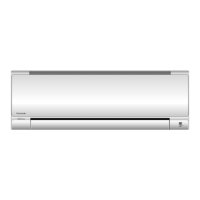
Why does my Panasonic CS-UE12RKE make a water flowing sound during operation?
The water flowing sound you hear during the operation of your Panasonic Air Conditioner is caused by the refrigerant flowing inside the unit.
Why does the POWER indicator blink before my Panasonic CS-UE12RKE Air Conditioner is switched on?
The POWER indicator blinks before the Panasonic Air Conditioner is switched on as a preliminary step in preparation for operation when the ON timer has been set.
Why does my Panasonic Air Conditioner indoor fan stop occasionally during automatic fan speed setting?
The indoor fan in your Panasonic Air Conditioner stops occasionally during automatic fan speed setting to help remove surrounding odors.
Why does my Panasonic Air Conditioner indoor fan stop occasionally during heating operation?
The indoor fan in your Panasonic Air Conditioner stops occasionally during heating operation to avoid unintended cooling effect.
Why does my Panasonic CS-UE12RKE airflow continue even after operation has stopped?
The airflow continues even after your Panasonic Air Conditioner has stopped to extract remaining heat from the indoor unit, which takes a maximum of 30 seconds.
| Type | Air conditioner indoor unit |
|---|---|
| Ionizer | No |
| Multi-split | - |
| Product color | White |
| Hose length (max) | 15 m |
| Inverter technology | Yes |
| Dehumidifying capacity | 2 l/h |
| Air conditioner functions | Cooling, Dehumidifying, Heating |
| Cooling capacity in watts (max) | 3900 W |
| Cooling capacity in watts (min) | 850 W |
| Heating capacity in watts (max) | 5100 W |
| Heating capacity in watts (min) | 800 W |
| Cooling capacity in watts (nominal) | 3500 W |
| Cooling energy efficiency (EER, W/W) | 3.21 |
| Heating energy efficiency (COP, W/W) | 3.64 |
| Operating temperature (cooling) (T-T) | 5 - 43 °C |
| Operating temperature (heating) (T-T) | -10 - 24 °C |
| Seasonal efficiency rating (cooling) (SEER) | 5.6 |
| Heating capacity in watts (nominal) (Warmer heating season) | - W |
| Heating capacity in watts (nominal) (Average heating season) | 4000 W |
| Seasonal efficiency rating (heating) (SCOP) (Average heating season) | 3.8 |
| AC input voltage | 230 V |
| AC input frequency | 50 Hz |
| Design load (cooling) | 3.5 kW |
| Energy efficiency class (cooling) | A+ |
| Power consumption (cooling) (max) | 1280 W |
| Power consumption (cooling) (min) | 255 W |
| Power consumption (heating) (max) | 1470 W |
| Power consumption (heating) (min) | 200 W |
| Annual energy consumption (cooling) | 219 kWh |
| Hourly energy consumption (cooling) | - kWh |
| Design load (heating) (Warmer heating season) | - kW |
| Design load (heating) (Average heating season) | 2.4 kW |
| Energy efficiency class (heating) (Average heating season) | A |
| Annual energy consumption (heating) (Average heating season) | 884 kWh |
| Indoor unit type | Wall-mountable |
| Indoor unit depth | 214 mm |
| Indoor unit width | 870 mm |
| Indoor unit height | 290 mm |
| Indoor unit weight | 9000 g |
| Indoor units quantity | 1 |
| Cooling airflow (indoor unit) | 762 m³/h |
| Heating airflow (indoor unit) | 804 m³/h |
| Indoor unit noise level (high speed) | 42 dB |
| Outdoor unit noise level | - dB |
Steps to insert batteries into the remote control.
Steps to set the clock on the remote control.
Explains selecting modes, starting/stopping, and setting temperature.
Safety warnings related to indoor and outdoor units.
Safety warnings specific to the remote control.
Safety warnings related to the power supply.
Explains selecting modes (AUTO, HEAT, COOL, DRY) and fan speeds.
Explains switching between POWERFUL and QUIET modes for performance or noise reduction.
Instructions on adjusting horizontal airflow direction.
Guide to setting ON and OFF timers for the air conditioner.
Instructions for cleaning the indoor unit, including the front panel.
Details on cleaning and replacing air filters.
Information on the care and replacement of the air purifying filter.
Lists common symptoms that do not indicate a malfunction.
Steps to check before calling for professional servicing.
Procedure to retrieve error codes using the remote control.
Guidance on the collection and disposal of old electrical equipment and batteries.

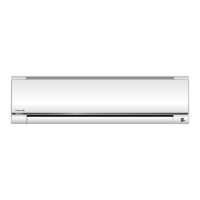
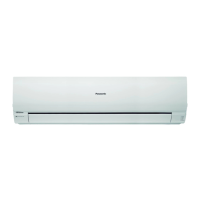
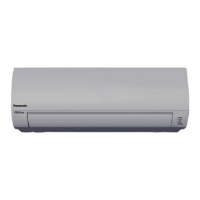


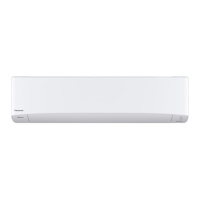


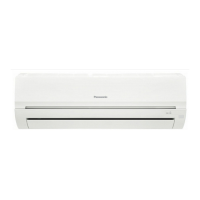


